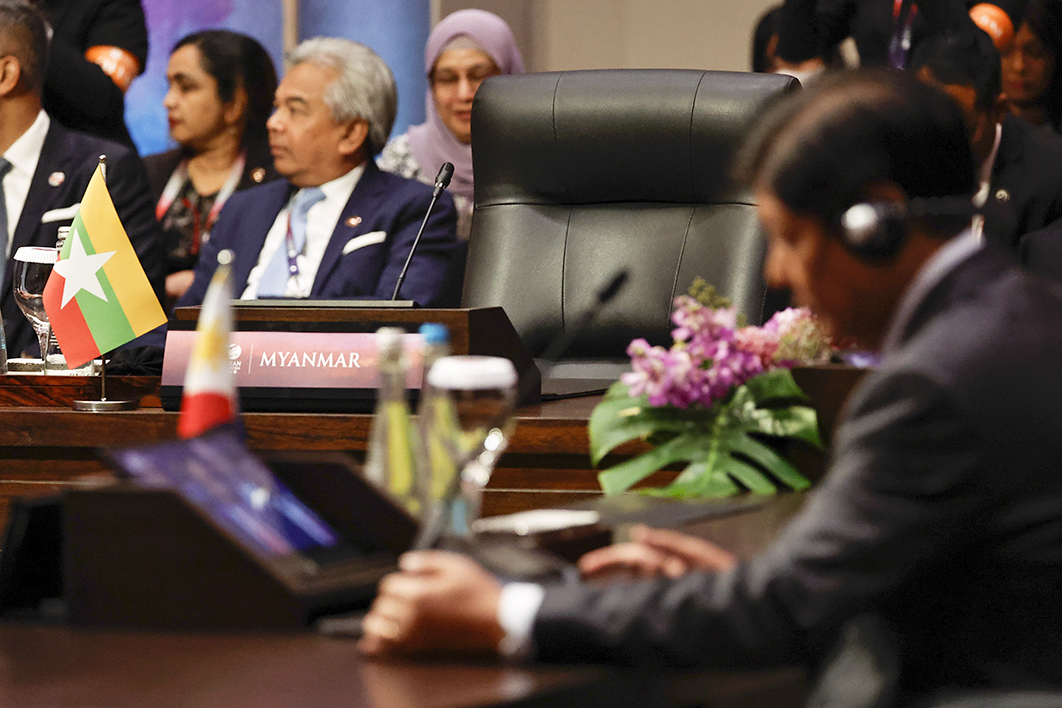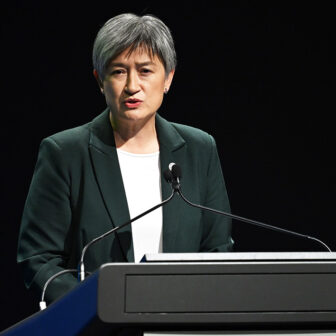Three years have gone by since we assessed the political prospects for Myanmar just before its 2020 election. Coinciding with the release of our edited book on that country’s politics, economy and society, our thoughts weren’t wildly optimistic. The National League for Democracy, led by Aung San Suu Kyi since it took power five years earlier, had tightened controls on civil society and the media, and in 2017 the military had launched a genocidal campaign against Myanmar’s Muslim Rohingya ethnic minority.
It’s true that the country’s military-authored 2008 constitution gave the civilian government no effective oversight of the military and other security services. But while Suu Kyi’s lamentable defence of its actions before the International Court of Justice in 2019 did her no harm domestically, it brought her international celebrity to a shuddering halt, alienating democratic governments around the world. Foreign aid continued to flow, but Western investment dried up as corporations registered the reputational risk of operating under a regime tainted by horrific human rights abuses.
At the time, like other Myanmar analysts, we considered a military coup unlikely given the cosy, profitable arrangement the military had designed for itself under the 2008 constitution. But a more general principle should have given Suu Kyi pause for thought before she travelled to the Hague: authoritarian leaders, and bullies more generally — including Myanmar’s military leaders — see compromise or acquiescence as weakness.
We weren’t surprised when the National League for Democracy was re-elected with a thumping majority and seemed set to consolidate its power. In the light of the hardship and abuse of the long years of miliary government, Suu Kyi’s win offered at the least a glimmer of hope.
Yet her government’s second term was cut short even before it started. On 1 February 2021, the first day of the new parliament, the military commander-in-chief, Min Aung Hlaing, ended a decade of reforms and semi-democratic rule and returned the country to the authoritarianism of the pre-2011 era. Suu Kyi was arrested and returned to her former role as political prisoner, as were the president and other National League for Democracy leaders.
As we wrote on the day of the coup, Myanmar’s people had enjoyed a decade of increased political and economic freedoms. The military was therefore likely to encounter “uncooperative subjects” as it sought to reimpose authoritarian rule.
That proved to be an understatement. The early opposition to the coup, nonviolent, almost festive, filled the streets of Yangon and other cities and towns around the country. The protesters were watched closely by the police, and sometimes the military, but little action was taken. A civil disobedience movement took hold, with striking or uncooperative workers paralysing major parts of the economy. Doctors, teachers, university lecturers: they all voiced their opposition to the military’s strangling of the government.
A month into these nonviolent protests the security services launched a more forceful response. Indiscriminate live fire into the crowds killed and injured protesters. National League for Democracy politicians and other protesters were arrested and tortured to death. A grim new chapter of reprisals and crackdowns had begun.
Under these conditions, opposition to the junta transformed from open, nonviolent action, with the risk of being abducted or shot, to an armed underground movement. The disparate militias of the newly formed People’s Defence Force are playing the key role, often supported by ethnic armed groups long opposed to the military.
The country descended into civil war — not only in the remote borderlands, where fighting led by ethnic armed groups has smouldered since independence in 1948, but also in the main cities and, perhaps most importantly, in the normally docile central dry zone populated by the numerically dominant Bamar (Burman) majority. This is the heartland from which the military usually draws much of its political strength and recruits.
A parallel National Unity Government was established, and the National League for Democracy’s UN ambassador managed to retain his position despite repeated attempts by the military junta to remove him.
The Myanmar people, their dreams having been so brutally dashed, are unlikely to accept a return to the uncomfortable compromises of the 2008 constitution. The army, having so carelessly discarded its comfortable and lucrative relationship with Suu Kyi’s League, now faces a popular and determined opposition implacably opposed to allowing it any role in government.
The catastrophic error of judgement by Min Aung Hlaing and the military leadership hasn’t only devastated much of the country. It has also destroyed any chance of peaceful coexistence between military and civilians for the foreseeable future.
This unravelling of constitutional rule made it necessary to revise our book. Our assumption had been that the National League for Democracy would govern for another five-year term, in coalition if necessary with some of the ethnic minority parties. The chance that another party would emerge to dominate Myanmar politics seemed remote, particularly while Suu Kyi remained at the League’s helm, and nor were the military-backed parties likely to cobble together a governing coalition.
We had a provisional agreement with our publishers to issue a second edition in the lead-up to the anticipated 2025 election, but these decisions are always conditional on first edition sales and other factors. Now the book required much earlier updating. Routledge accepted our proposal to accelerate the process, and the result is a fully revised second edition, just published, with extra chapters on education, health and the coup in historical context.
One difference in the new edition is that it draws on (and links to) articles published by the growing number of open-access policy outlets that provide fast — in some cases almost instant — research findings and analysis of regional issues. For Australian academics working on Myanmar politics these include the Australian Strategic Policy Institute’s Strategist, the Lowy Institute’s Interpreter, the Australian Institute of International Affairs’s Australian Outlook and the Australian National University’s East Asia Forum. The Conversation also provides an invaluable space for academics to reach a more general audience with short research-based articles, and Inside Story publishes longer essays.
While these outlets don’t provide all the rigour of refereed journal articles, they overcome the delays in traditional academic publishing that can be frustrating for academics analysing contemporary events. Having this political analysis available much more quickly and free of charge is crucial, particularly when dealing with a region like Southeast Asia where local academics, analysts and members of the public are much less likely to have access to paywalled journal articles and books.
We are particularly pleased that help from our contributors’ institutions has enabled us to make the book available for download free of charge. We see it as a crucial social justice issue that the contributors’ analyses are freely available to readers in Myanmar, Southeast Asia and the rest of the world.
Meanwhile, with much of the world’s focus understandably on conflict in Ukraine and the Middle East, the Myanmar crisis has been relegated to footnote status. Although the United States’ BURMA Act earlier this year raised hopes of more international support for the opposition movement, little progress is evident.
Myanmar’s military continues its brutal campaign of attacks on civilians, including the burning of villages and indiscriminate air strikes on civilian targets. A single attack in central Myanmar in May killed more than 160 people, including children.
While the privations and suffering of the Rohingya that we described three years ago have spread across much of the rest of the population, we should not forget the terrible situation of that community. Over a million Rohingya refugees have spent more than six years in Bangladeshi border refugee camps at the mercy of criminal gangs, their already tiny food rations further reduced in recent times.
As investigations of genocide, war crimes and crimes against humanity slowly wind their way through the International Court of Justice, International Criminal Court, and courts in Germany and elsewhere, the Rohingya and Myanmar’s wider population experience no respite.
The top generals have been excluded from most diplomatic engagement, and are only welcomed by Russia, China, North Korea and a few other authoritarian regimes. Even ASEAN, which has tended to tolerate a fair bit of bad behaviour in Myanmar, recognises that the military regime in Naypyitaw presents a reputational risk for the entire region. An empty seat at ASEAN symbolises much wariness about legitimising the violence and devastation unleashed by the coup and sends a signal, albeit a weak one, to other autocratic regimes.
Like Ukraine, Myanmar is suffering the consequences of terrible decisions by ruthless, isolated leaders. As we look ahead it is crucial that we don’t ignore the crimes of these despots and the need to find just outcomes.
The answers will usually be found on the ground, in the hard slog of defying dictatorial rule. But let’s not ignore the contributions that can be made by democratic states prepared to resolutely oppose these dictatorial regimes. A concerted international effort to support the National Unity Government materially, diplomatically and militarily could easily alter the dynamics in Myanmar. •




